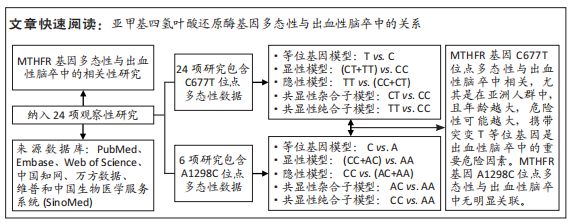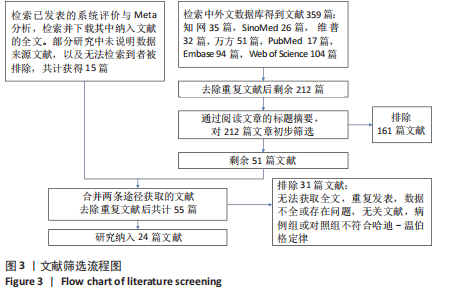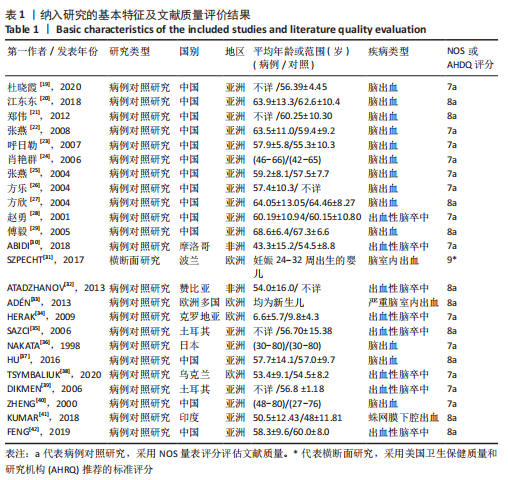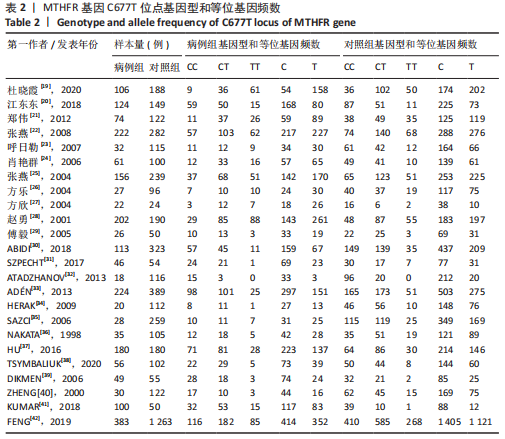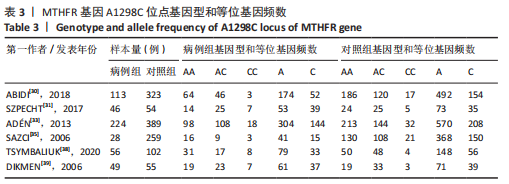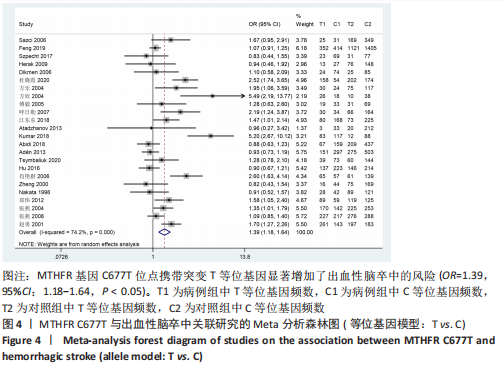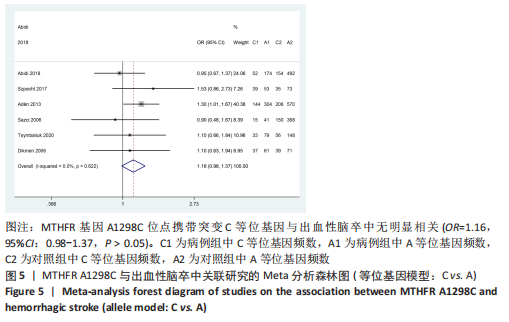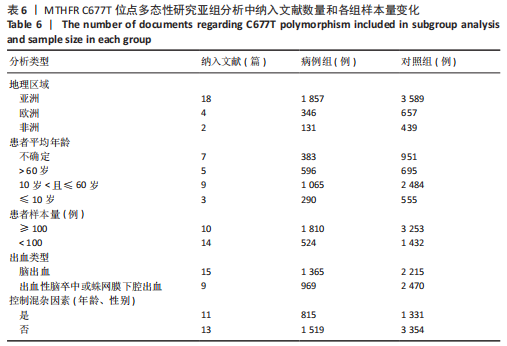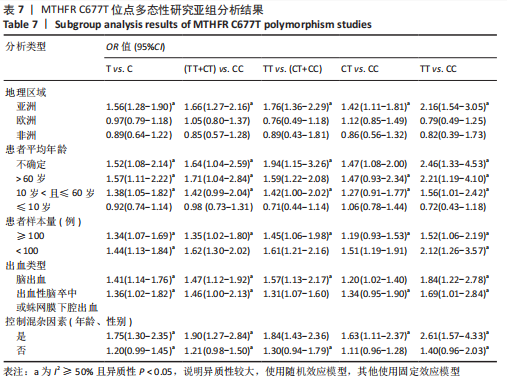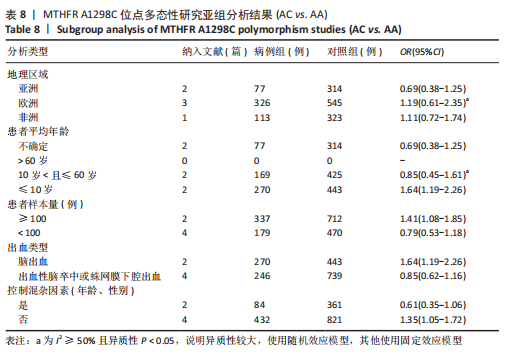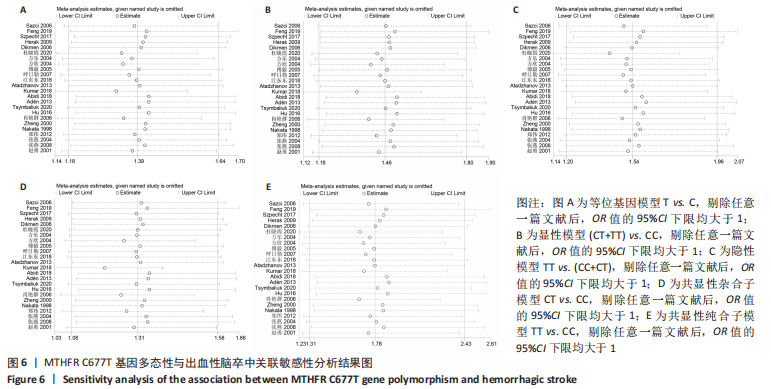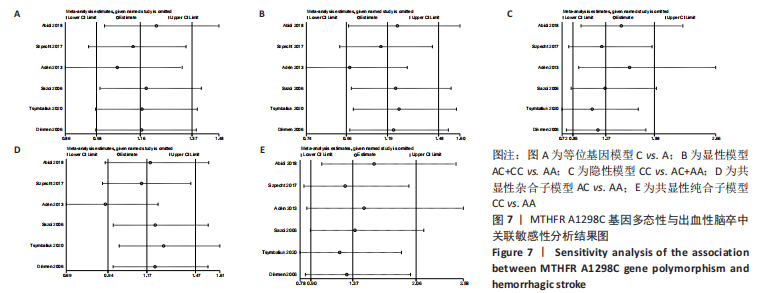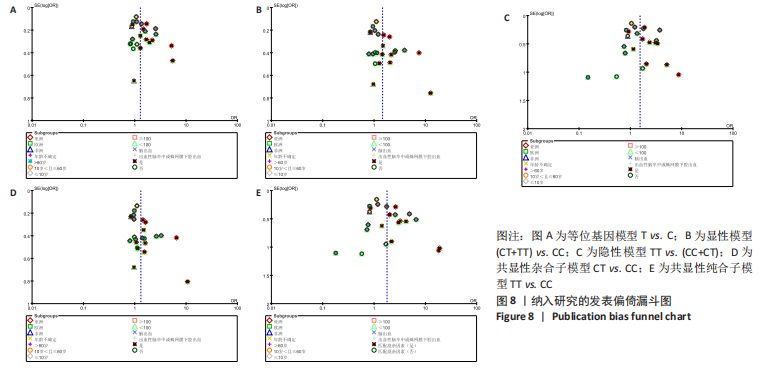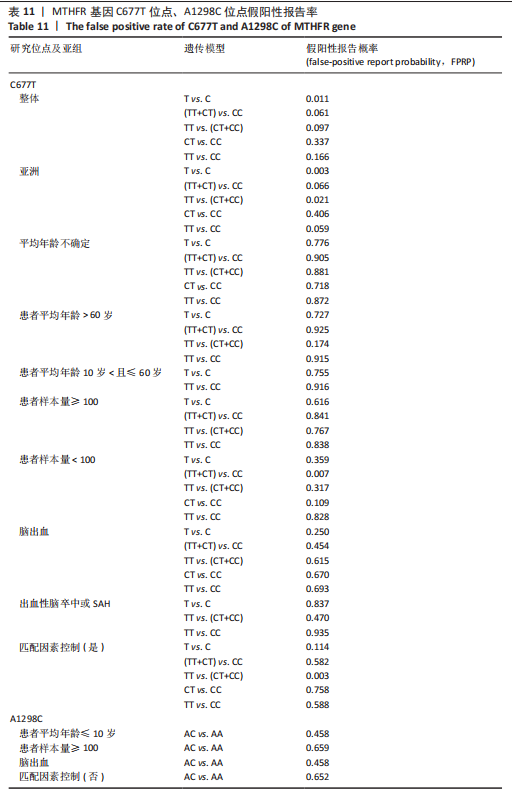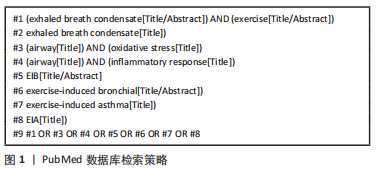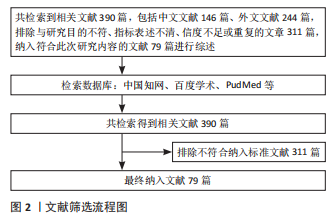[1] FEIGIN VL, STARK BA, JOHNSON CO, et al. Global, regional, and national burden of stroke and its risk factors, 1990–2019: a systematic analysis for the Global Burden of Disease Study 2019. Lancet Neurol. 2021;20(10):795-820.
[2] LIU S, LIU M, LI Q, et al. Association of single nucleotide polymorphisms of MTHFR, TCN2, RNF213 with susceptibility to hypertension and blood pressure. Biosci Rep. 2019;39(12):BSR20191454.
[3] 王慧,刘岩岩,张裕,等.MTHFR基因多态性与儿童原发性高血压的相关性研究[J].中国当代儿科杂志,2022,24(5):579-584.
[4] WU H, HUANG Q, YU Z, et al. Association of ALDH2 rs671 and MTHFR rs1801133 polymorphisms with hypertension among Hakka people in Southern China. BMC Cardiovasc Disord. 2022;22(1):128.
[5] CANDRASATRIA RM, ADIARTO S, SUKMAWAN R. Methylenetetrahydrofolate reductase C677T gene polymorphism as a risk factor for hypertension in a rural population. Int J Hypertens. 2020;2020: 4267246.
[6] 魏守超,刘志辉,刘君玲.亚甲基四氢叶酸还原酶基因C677T多态性与中国山东地区汉族人群缺血性卒中、高尿酸血症的相关性[J].国际脑血管病杂志,2016, 24(11):1004-1009.
[7] WEI W, LIU SY, ZENG FF, et al. Meta-analysis of the association of the C677T polymorphism of the methylenetetrahydrofolate reductase gene with hyperuricemia. Ann Nutr Metab. 2012; 60(1):44-51.
[8] ZHAO X, JIANG H. Quantitative assessment of the association between MTHFR C677T polymorphism and hemorrhagic stroke risk. Mol Biol Rep. 2013;40(1):573-578.
[9] LV Q, LU J, WU W, et al. Association of the methylenetetrahydrofolate reductase gene A1298C polymorphism with stroke risk based on a meta-analysis. Genet Mol Res. 2013;12(4):6882-6894.
[10] WANG F, XU Z, JIAO H, et al. Associations between MTHFR gene polymorphisms and the risk of intracranial hemorrhage: evidence from a meta-analysis. Brain Behav. 2021;11(1):e1840.
[11] MA S, FAN X, ZHAO X, et al. Risk factors for early-onset seizures after stroke: a systematicreview and meta-analysis of 18 observational studies. Brain Behav. 2021; 11(6):e2142.
[12] LI X, HE J, YUN J. The association between serum vitamin D and obstructive sleep apnea:an updated meta-analysis. Respir Res. 2020;21(1):294.
[13] 曾宪涛,刘慧,陈曦,等.Meta分析系列之四:观察性研究的质量评价工具[J].中国循证心血管医学杂志,2012,4(4):297-299.
[14] 王霄玲,朱洁云,李柏成,等.BMI与宫颈癌发病风险的Meta分析[J].现代预防医学, 2020,47(8):1393-1398.
[15] 林振南,贾砚慧,陈恕凤.脂蛋白(a)基因多态性与冠心病相关性的Meta分析[J].中国动脉硬化杂志,2022,30(2):152-160.
[16] 谭颖超,杨珺玥,王莉娜.白细胞介素-1B-511C/T基因多态性与冠状动脉粥样硬化性心脏病关联的meta分析[J].上海交通大学学报(医学版),2022,42(2): 197-204.
[17] WACHOLDER S, CHANOCK S, GARCIA-CLOSAS M, et al. Assessing the probability that a positive report is false: an approach for molecular epidemiology studies. J Natl Cancer Inst. 2004;96(6):434-442.
[18] 翁鸿,张永刚,牛玉明,等.遗传关联性研究Meta分析的多重检验校正方法[J].中国循证心血管医学杂志,2016,8(12): 1409-1411.
[19] 杜晓霞,肖琳,孙蓉,等.高同型半胱氨酸血症卒中患者高血压发病情况及疗效分析[J].北京医学,2020,42(5):379-382.
[20] 江东东,盛文利,罗曼.中国南方汉族人群亚甲基四氢叶酸还原酶基因C677T多态性与脑出血的关系[J].临床神经病学杂志,2018,31(1):10-14.
[21] 郑伟,杨智,安殿梅,等.脑血管病患者高同型半胱氨酸血症发生机制的初步研究[J].中国医科大学学报,2012,41(1): 69-72.
[22] 张燕,谢汝萍,沈扬,等.亚甲基四氢叶酸还原酶基因C677T多态性与睡眠时间的相互作用对卒中的影响(英文)[J].北京大学学报(医学版),2008,40(3):262-269.
[23] 呼日勒,赵世刚,牛广明,等.N5,10-亚甲基四氢叶酸还原酶基因多态性与蒙古族原发性高血压病及高血压病合并脑血管病的关系[J].卒中与神经疾病,2007, 14(1):13-15.
[24] 肖艳群,蒋玲丽,陆青,等.亚甲基四氢叶酸还原酶基因多态性及血浆同型半胱氨酸水平与脑血管病的关系[J].检验医学,2006,21(3):201-204.
[25] 张燕,谢汝萍,陈大方,等.亚甲基四氢叶酸还原酶基因多态性与脑出血的相关性研究[J].北京医学,2004,26(4):219-221.
[26] 方乐,邬英全,王田蔚.中国北方汉族人体MTHFR和CBS基因多态性与脑梗死及脑出血遗传相关性的研究(英文)[J].中国临床康复,2004,8(22):4654-4656.
[27] 方欣,洪震,任惠民,等.脑血管病病人MTHFR基因多态性和基因型对叶酸代谢、同型半胱氨酸代谢的影响[J].中华临床医药杂志,2004,5(1):5-9.
[28] 赵勇,马丽媛,王兴宇,等.MTHFR基因C677T多态性与出血性脑卒中的关系[J].中国急救医学,2001,21(10):21-22.
[29] 傅毅,刘建荣,倪培华,等.同型半胱氨酸及代谢酶基因多态性与脑卒中的相关性研究[J].中华老年医学杂志,2005,24(6): 413-417.
[30] ABIDI O, HAISSAM M, NAHILI H, et al. Methylenetetrahydrofolate reductase gene polymorphisms (C677T and A1298C) and hemorrhagic stroke in moroccan patients. J Stroke Cerebrovasc Dis. 2018;27(7):1837-1843.
[31] SZPECHT D, GADZINOWSKI J, SEREMAK-MROZIKIEWICZ A, et al. The role of FV 1691G > A, FII 20210G > A mutations and MTHFR 677C > T; 1298A > C and 103G > T FXIII gene polymorphisms in pathogenesis of intraventricular hemorrhage in infants born before 32 weeks of gestation. Childs Nerv Syst. 2017;33(7):1201-1208.
[32] ATADZHANOV M, MWABA MH, MUKOMENA PN, et al. Association of the APOE, MTHFR and ACE genes polymorphisms and stroke in Zambian patients. Neurol Int. 2013;5(4):e20.
[33] ADEN U, LIN A, CARLO W, et al. Candidate gene analysis: severe intraventricular hemorrhage in inborn preterm neonates. J Pediatr. 2013;163(5):1503-1506.
[34] Herak DC, Antolic MR, Krleza JL, et al. Inherited prothrombotic risk factors in children with stroke, transient ischemic attack, or migraine. Pediatrics. 2009;123(4): e653-660.
[35] SAZCI A, ERGUL E, TUNCER N, et al. Methylenetetrahydrofolate reductase gene polymorphisms are associated with ischemic and hemorrhagic stroke: dual effect of MTHFR polymorphisms C677T and A1298C. Brain Res Bull. 2006;71(1-3):45-50.
[36] NAKATA Y, KATSUYA T, TAKAMI S, et al. Methylenetetrahydrofolate reductase gene polymorphism: relation to blood pressure and cerebrovascular disease. Am J Hypertens. 1998;11(8 Pt 1):1019-1023.
[37] HU X, TAO C, XIE Z, et al. The MTHFR C677T polymorphism and risk of intracerebral hemorrhage in a Chinese Han population. Med Sci Monit. 2016;22:127-133.
[38] TSYMBALIUK VI, VASYLIEVA IG, KOSTIUK MR, et al. Analysis of association between FGB, MTHFR, MTR and MTRR genes polymorphisms and ischemic and hemorrhagic stroke. Zaporozhye Med J. 2020;22(4):459-467.
[39] DIKMEN M, OZBABALIK D, GUNES H V, et al. Acute stroke in relation to homocysteine and methylenetetrahydrofolate reductase gene polymorphisms. Acta Neurol Scand. 2006;13(5):307-314.
[40] ZHENG YZ, TONG J, DO XP, et al. Prevalence of methylenetetrahydrofolate reductase C677T and its association with arterial and venous thrombosis in the Chinese population. Br J Haematol. 2000;109(4):870-874.
[41] KUMAR M, GOUDIHALLI S, MUKHERJEE K, et al. Methylenetetrahydrofolate reductase C677T variant and hyperhomocysteinemia in subarachnoid hemorrhage patients from India. Metab Brain Dis. 2018,33(5):1617-1624.
[42] FENG C, YANG Y, YANG S, et al. Effect of gene-gene and gene-environment interaction on the risk of first-ever stroke and poststroke death. Mol Genet Genomic Med. 2019;7(8):e846.
[43] 贺婵婵,郭爱红,吴曼玲,等.MTHFR C677T和A1298C基因多态性的生物信息学分析[J].中国优生与遗传杂志,2021, 29(2):158-161.
[44] BASZCZUK A, KOPCZYNSKI Z, THIELEMANN A. Dysfunkcja śródbłonka naczyniowego u chorych na pierwotne nadciśnienie tętnicze z hiperhomocysteinemią [Endothelial dysfunction in patients with primary hypertension and hyperhomocysteinemia]. Postepy Hig Med Dosw (Online). 2014;68: 91-100.
[45] WU YL, HU CY, LU SS, et al. Association between methylenetetrahydrofolate reductase (MTHFR) C677T/A1298C polymorphisms and essential hypertension: a systematic review and meta-analysis. Metabolism. 2014;63(12):1503-1511.
[46] MENG H, HUANG S, YANG Y, et al. Association between MTHFR polymorphisms and the risk of essential hypertension: an updated meta-analysis. Front Genet. 2021;12:698590.
[47] 余灿清,李立明. 假阳性结果报告率在分子流行病学研究中的应用[J].中华预防医学杂志,2009,43(12):1141-1142. |
